Spring Birds of the Huron Fringe
- Merri-Lee M.
- Feb 16, 2020
- 6 min read

Spring is coming! What might we find if we are out and around on “The Fringe” in mid-late May? Here are photos of a few of the many migrants that were spotted in 2018 and 2019, around and during the time of the Huron Fringe Birding Festival.
One of my favourite Spring visitors to the Huron Fringe is the Black-billed Cuckoo. At the end of their long migratory journeys, the Cuckoos are ready to eat, and their meal of choice is a mouthful of big, juicy Tent Caterpillars.



Warblers that come in along the shore and feed in roadside trees are always greeted with much excitement. Little wonder... the diversity of song and colouring is amazing.
Blackburnian Warblers, with their bold, orange and black feathers, are among the most striking Spring arrivals.


The Canada Warbler is elusive and quick, but this one landed beside me in the Cedars south of Brucedale Park -- for about 3 seconds.

In 2018 there was a pair of Canada Warblers near the Ducks Unlimited Pond Tower. Nesting, perhaps?

2019 was a good year for Bay-breasted Warblers, and a small flock showed up around noon in mid-May right outside our cottage door. The Males were brilliantly “bay”,



while the Females’ colours were a bit more subdued.


A Nashville Warbler moved rapidly among the branches.

A hungry Northern Parula ate its fill of insects from the opening leaves of deciduous trees.

The Black-throated Green Warbler fed close by, but paused more frequently than the others (to pose for a photo?). This bird looked a bit bedraggled. Migration is a stressful, taxing activity, and the Warblers always arrive exhausted and desperate for food.


Another Black-throated Green seems to be wondering if a Spider would mind sharing a few of the insects in its web...

I heard this little one before I saw him, singing away in the wild Juniper shrubs. He would “warble" for a few minutes, then grab a snack. Stunning little Magnolia Warbler...



I don’t usually see the Black-throated Blue Warbler in mixed flocks. This Male was photographed near St. Agatha, ON;
however, these Warblers are sighted in many locations along the lake as well.

The Female Black-throated Blue looks very different from the Male, but both have a light patch on the wing.


Palm Warblers often arrive earlier than their cousins, and do not seem to mind human presence.
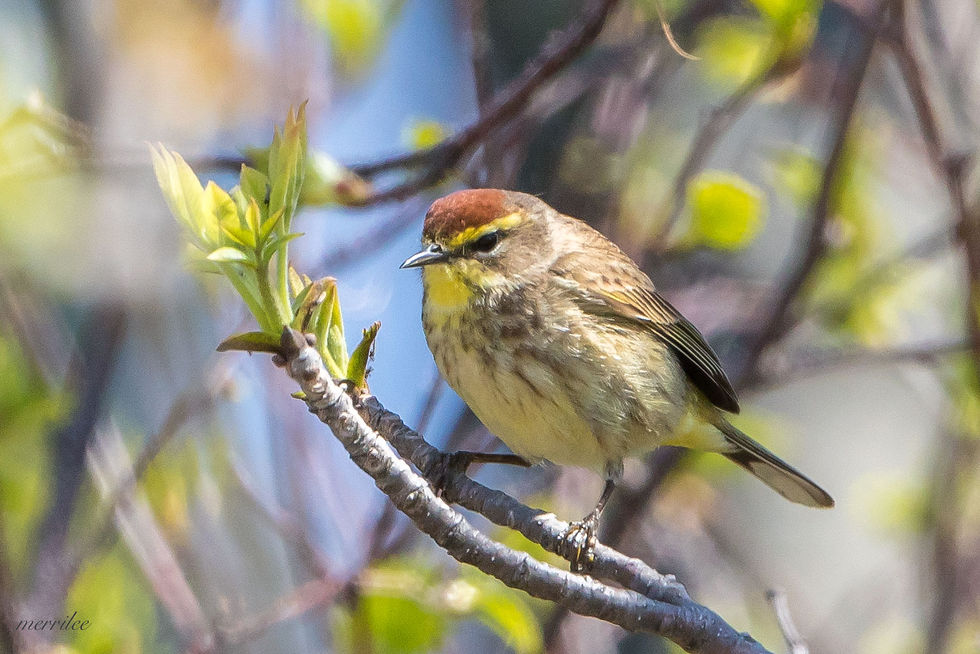
In the evening, just as the sun was setting over the lake, a small flock of Warblers foraged along the shore in an Evergreen grove:
A Cape May Warbler found plenty of insects in the Cedars,

and a brilliant Yellow Warbler bounced around in a Tamarack Tree.

Yellow Warblers practically glow, and their cheery songs fill the forest in early Spring. This adult Male has the distinctive reddish markings on his breast.

Closer to MacGregor Point, there are usually a few sightings of Blue-winged Warblers,
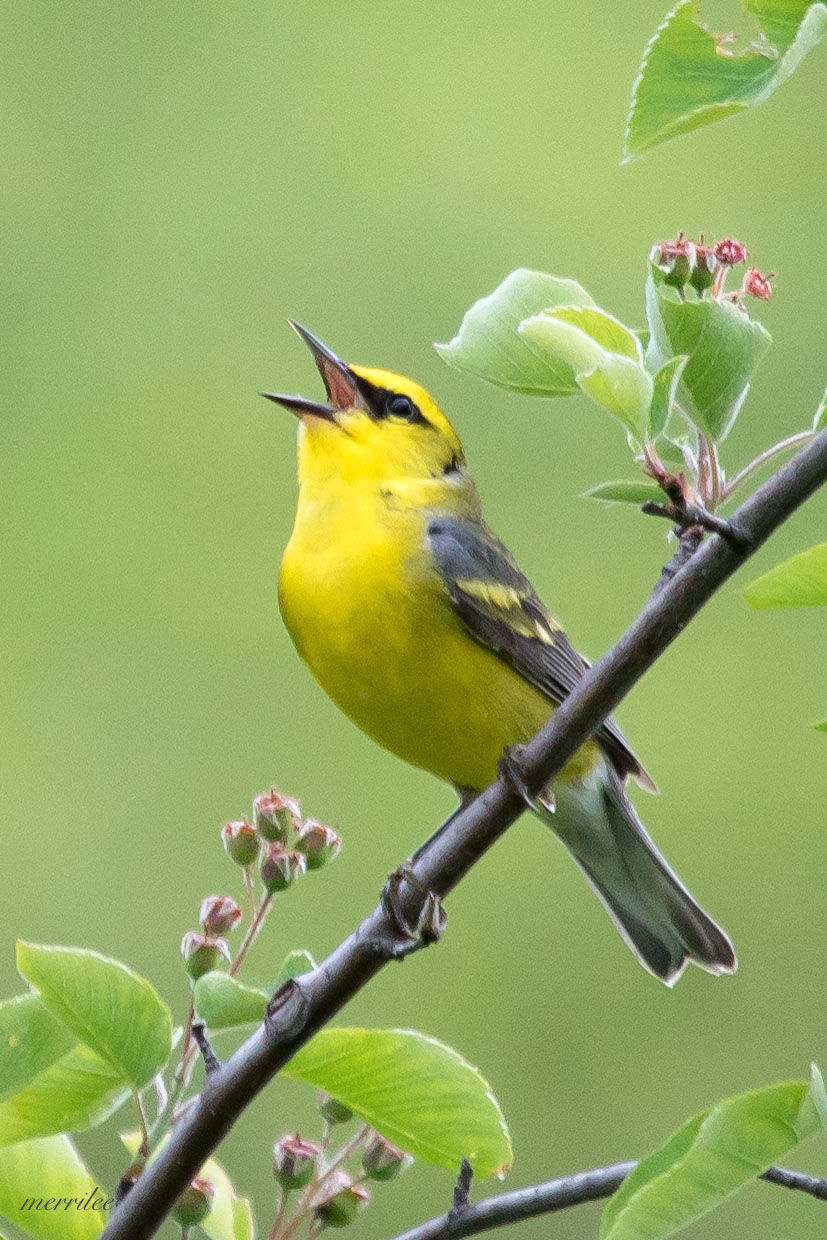

and the rare Golden-winged Warbler. This Brewster’s Warbler is a Golden-winged/Blue-winged cross.

Bath time for a Common Yellowthroat.....


The handsome American Redstart is a common sight in and around MacGregor, as he sings and feeds and shows off for potential mates.

There was a Female Redstart on a nest near the Ducks Unlimited Pond tower.

Along the D.U. Pond Trail, an Olive-sided Flycatcher has been seen 2 years in a row in almost exactly the same spot.
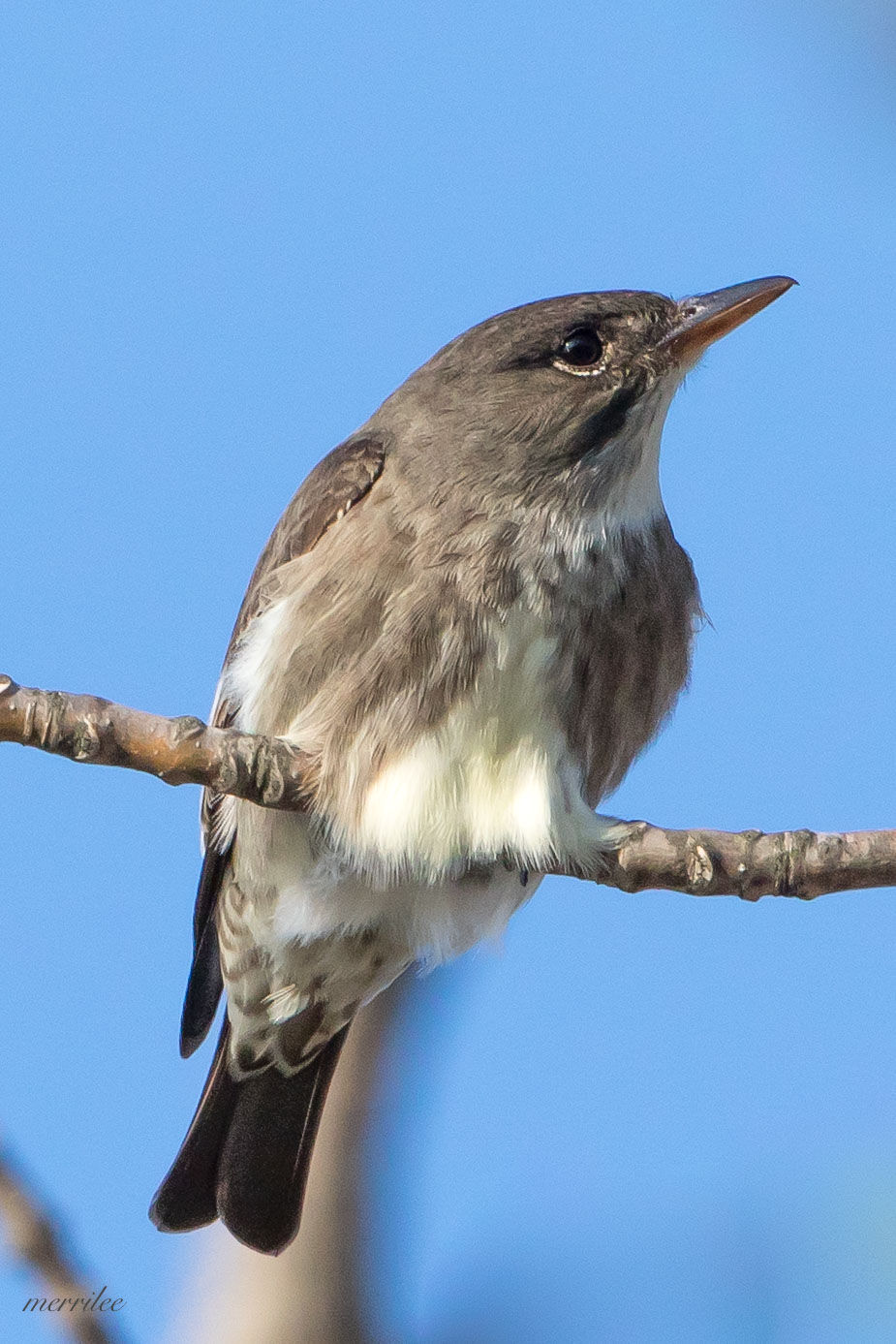

A Yellow-bellied Flycatcher refused to turn around to show its yellow belly.

The Eastern Phoebe was singing its name, and entertaining the humans with its flycatching behaviour.



2 Great-crested Flycatchers, with their loud “Creep!” calls,
appeared together around the pond.


The Traill’s Flycatcher ( Willow or Alder) is a fairly common sight around the Huron Fringe.


The Eastern Wood Pewee favours forest borders, and has "longer wings, long primary projection, and ...dark face with weak partial eye-ring” (Sibley).

Some of the birds of the Huron Fringe are brilliantly coloured. The Scarlet Tanager is not one of the more well-camouflaged birds of the forest!


It is always a thrill to see the stunning Red-headed Woodpecker.


This gorgeous bird was seen along Sauble Beach in some trees across from the lake at the north end.
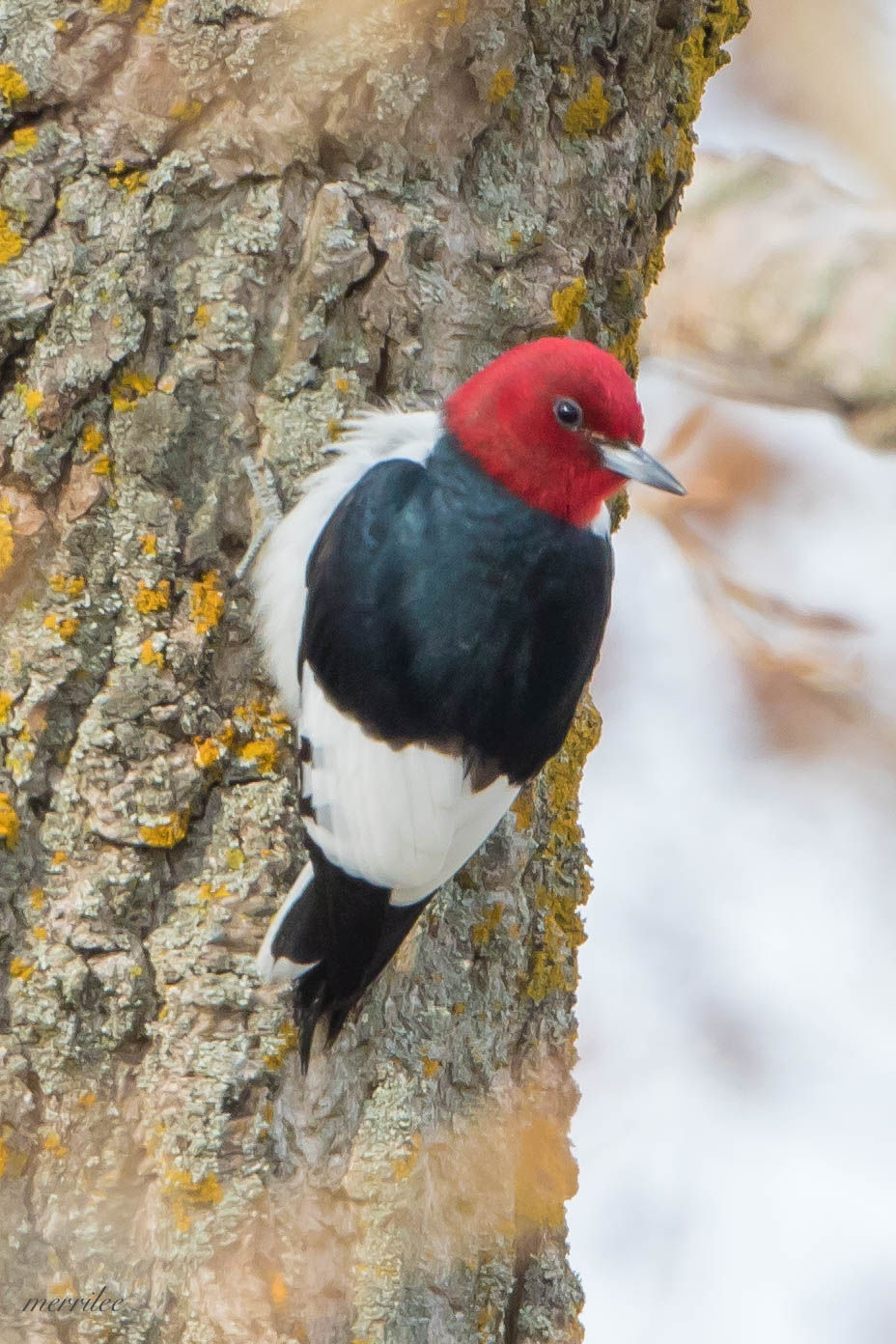
A huge Pileated Woodpecker was drilling an opening in a tall tree,
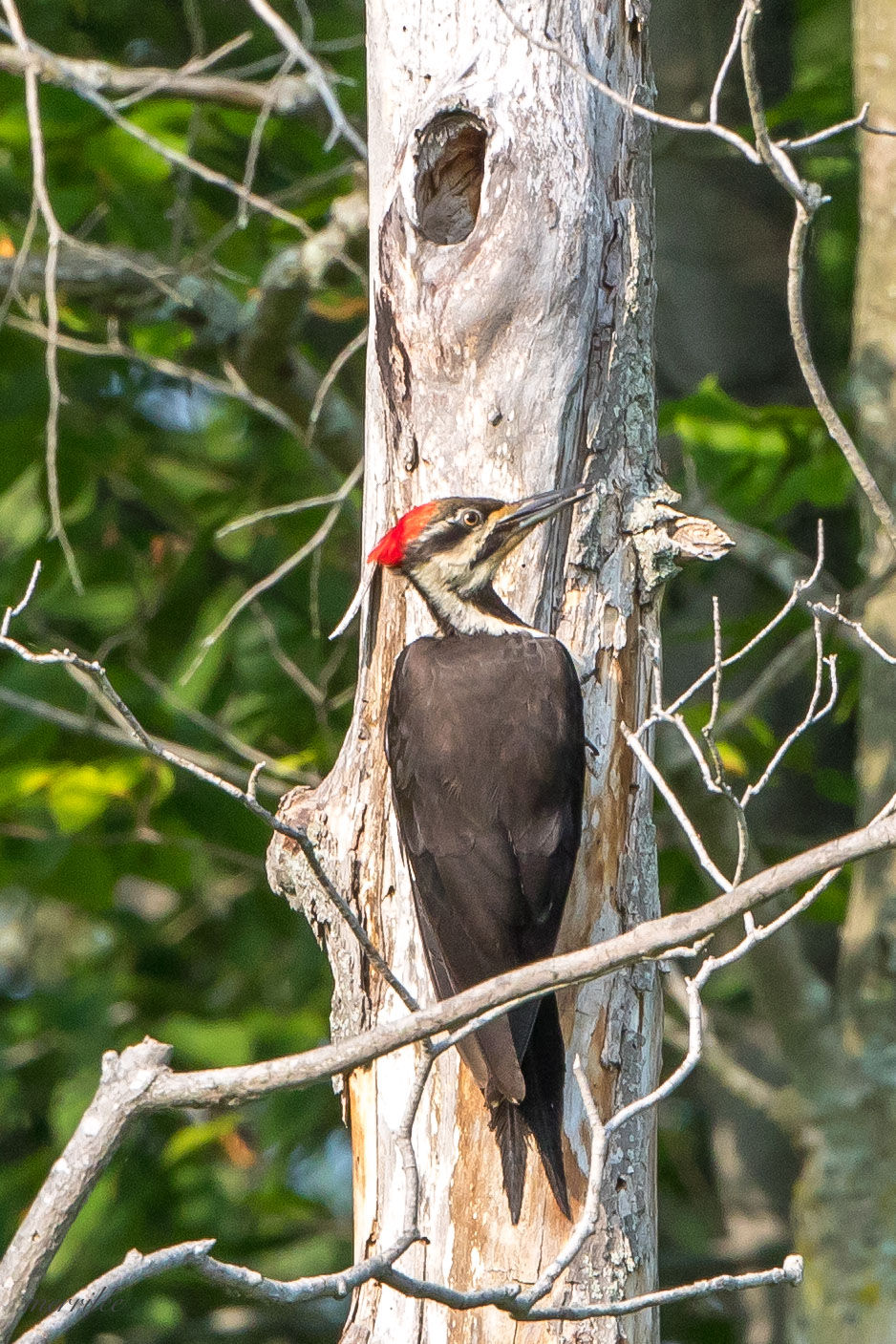
and 2 Yellow-bellied Sapsuckers were busy making lines of holes in trees south of Brucedale Park.


The sight and sound of a Male Indigo Bunting....pretty impressive!

A Rose-breasted Grosbeak was feeding on the ground along the roadside near MacGregor,

while a pair foraged among the “catkins”.



A pair of Purple Finches fed on the road (J1 Line) not far from my parked car.


There is usually a Gray Catbird somewhere within "calling distance", especially near the streams and ponds of MacGregor.

Brewer’s Blackbirds are seen along fence rows on farmland,
and on hydro poles. This one was perched away back in a field.

Several different Vireos can be seen along the Huron Fringe.
A stunning Blue-headed Vireo was very co-operative...


and its rarer relative, the Yellow-throated Vireo, made an appearance on the Bruce Peninsula in 2018.

This Warbling Vireo, with its yellow sides, and light-coloured eye stripe and lores, was spotted feeding with a flock of Warblers.

The Philadelphia Vireo is very similar to the Warbling Vireo, but has dark lores. It also has (according to Sibley) a darker yellow throat, “brightest in the centre”.



Red-eyed Vireos are frequently seen on “the Fringe” as well, and I will add a photo when I find it!
Some interesting Sparrows usually appear in the Spring along the peninsula.
This Lincoln’s Sparrow and its mate were spotted near Hepworth, but I have seen these birds along the D.U. Trail in other years.


Savannah Sparrows’ whispery calls can be heard along the J1 Line, and in other grassland areas.

This Savannah Sparrow sat and sang among the Spittlebugs.

I heard the beautiful melody of a Field Sparrow back near the forest along the D.U. road...but he only popped out for a quick moment for a distant, against-the-sun shot (which is seriously cropped here!). Still, it was wonderful to hear and see a Field Sparrow.

A Swamp Sparrow serenaded us...


and we were lucky enough to catch a glimpse (but not great photos!) of a pair of Clay-coloured Sparrows flitting among the brush on the roadside. I am listing some of Sibley’s descriptive phrases for this Sparrow, because it can look quite similar to a Chipping Sparrow:
“bold, buffy supercilium” “clean nape”, “pale lores”, “strong,
dark ‘moustache’”, “buffy breastband" “white in median crown-stripe”, and white “lateral throat stripe"


A young Canada Goose, with its mixture of baby down and adult feathers, stepped into the pond for a float.

Several Great White Egrets enjoyed fishing and wading in the flooded fields along the J1 Line.

Great Blue Herons are found foraging in shallow ponds, streams, and beaches along the Huron Fringe.

Sandhill Cranes with their young wandered along the back of a field near a brush and stone pile.

A Spotted Sandpiper walked toward me on the J1 Line, and others were sitting on the fenceposts and walking in the fields.
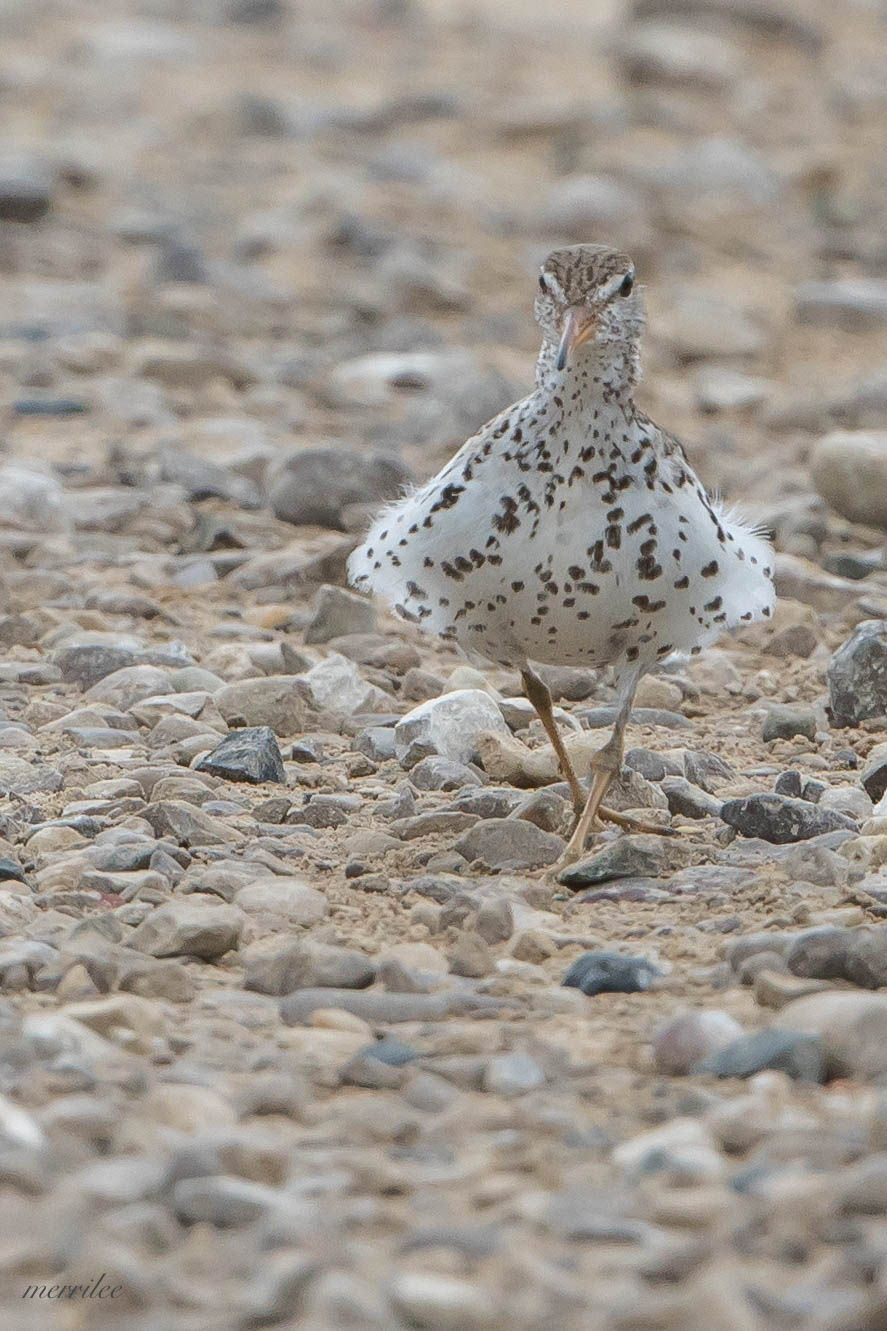

It was a real thrill to catch a quick glimpse of a Least Bittern from the D.U. Pond Tower, just before it disappeared into the reeds and brush.

Grasslands and pasture fields are havens for Meadowlarks

and Bobolinks. In one wonderful field of yellow along a sideroad off the Grey Bruce Line, we counted 7 Male Bobolinks singing and displaying.

The Female Bobolinks in this field had some options as they decided on suitable partners!

Of course, it isn’t completely about the birds. Along a trail in MacGregor, someone spotted a Spring Peeper,

and there were plenty of Leopard Frogs.

The Green Frog is common in shallow ponds.

Giant Snapping Turtles, covered in algae, climb up onto roadsides to dig holes and lay their eggs.

Painted Turtles are on the move in Spring too, and (unfortunately) are often seen crossing roads.

And a sleepy Porcupine kept watch from its perch high in a tree on a misty morning in the park.

As stated at the beginning of this blog, there are many more critters and plants to be seen in this area than I have recorded here. I haven’t even touched on the Ducks, Snakes, Insects,.... We are privileged to experience such incredible diversity in the area we call “The Huron Fringe”.
P.S. Can’t forget the Piping Plovers...there aren’t usually chicks until early-mid June, but these rare birds have established themselves as an iconic “Huron Fringe” species.

This way to the Huron Fringe!





Comments